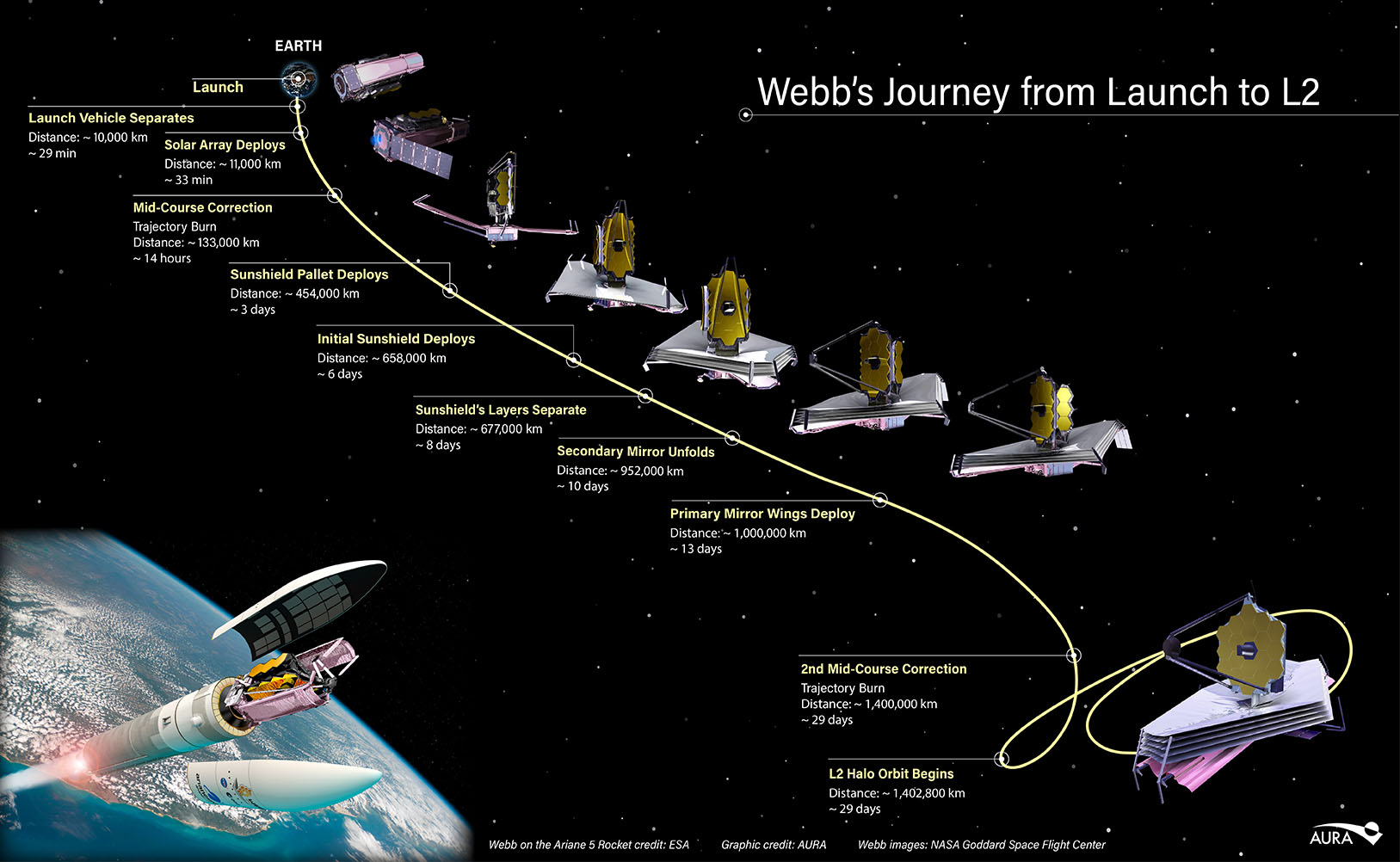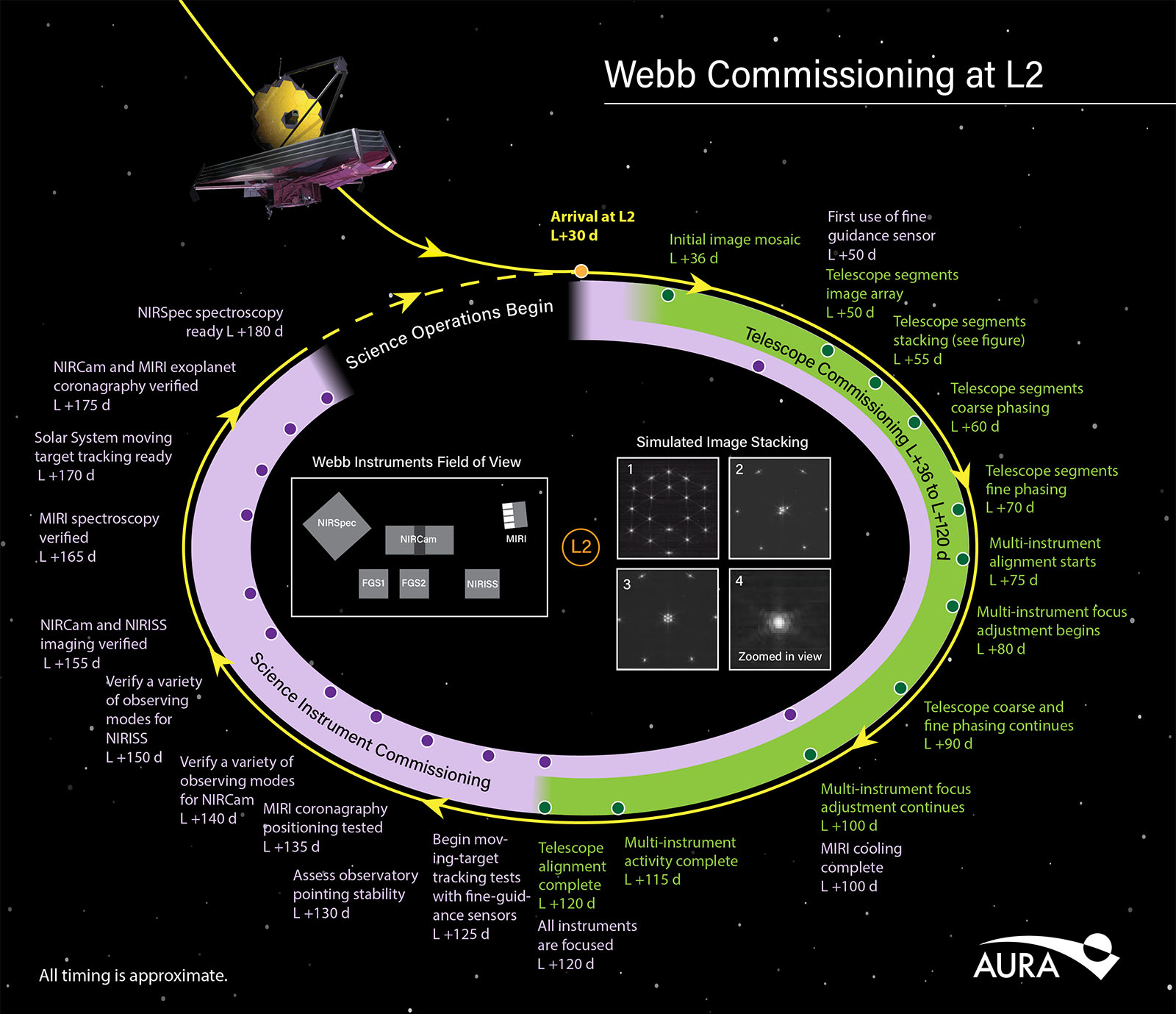Why will it take six months to see JWST’s first science images?
Excerpt from a Planetary Society blog post by Heidi B. Hammel. Read the full blog on The Planetary Society website.
The James Webb Space Telescope (JWST) is ready for launch from the Guiana Space Center in Kourou, French Guiana. More than 20 years in the making, JWST’s observations of the cosmos will change our understanding of our universe.
JWST’s destination is the Earth-Sun Lagrange 2 point. After launch, it will take 29 days for the telescope to reach L2, and that month is characterized by NASA as “29 days on the edge.”
During this month, JWST will go through a carefully choreographed sequence of “deployments” of its major structural components: unfurling its solar panels, deploying an antenna, and then beginning the slow process of sunshield deployment. After the sunshield is in place, the secondary mirror swings into place, and the wings of the primary mirror fold out. If this sounds simple, it is not:

JWST’S JOURNEY TO L2 JWST’s journey from launch to the Sun-Earth L2 point will be filled with a steady stream of spacecraft activities, from unfurling the sunshield (starting 3 days after launch) to unfolding the telescope mirror (13 days after launch). Image: AURA / S. Lifson
By the time JWST arrives at L2, it will be fully deployed and ready to start the next phase of preparations: commissioning. Commissioning is the process by which JWST and its equipment are formally made ready for science and comes in two main activities. First, the JWST telescope team needs to align all of the segments of the primary mirror, so they function as one perfectly focused telescope (telescope commissioning). Second, the JWST Science Instrument teams must test and calibrate each of the many modes of the four science instruments on board (science instrument commissioning).

JWST COMMISSIONING After JWST arrives at L2, its first trip around the L2 “halo orbit” will be jam-packed with work for the JWST team. The telescope commissioning (green) ensures that all 18 segments of the main mirror are aligned and will bring the telescope to perfect focus. The insets on the right show an example of image stacking: moving the segments so that a star’s image from each segment is brought into alignment; the final image is zoomed in to show that all 18 images are correctly stacked. Throughout the telescope commissioning, the science instruments are cooling down and preparing for their own detailed check-outs (purple). The inset on the left shows their relative positions on the sky; the inset box is roughly 20 x 10 arcminutes on a side (for reference, the full moon is about 30 arcminutes across). All dates in this diagram are approximate, and the activities noted represent only a tiny fraction of the commissioning work being done.Image: AURA / S. Lifson
